How to Make a Subway Map with John Tauranac
Hear from an author and map designer who has been creating maps of the NYC subway, officially and unofficially, for over forty years!


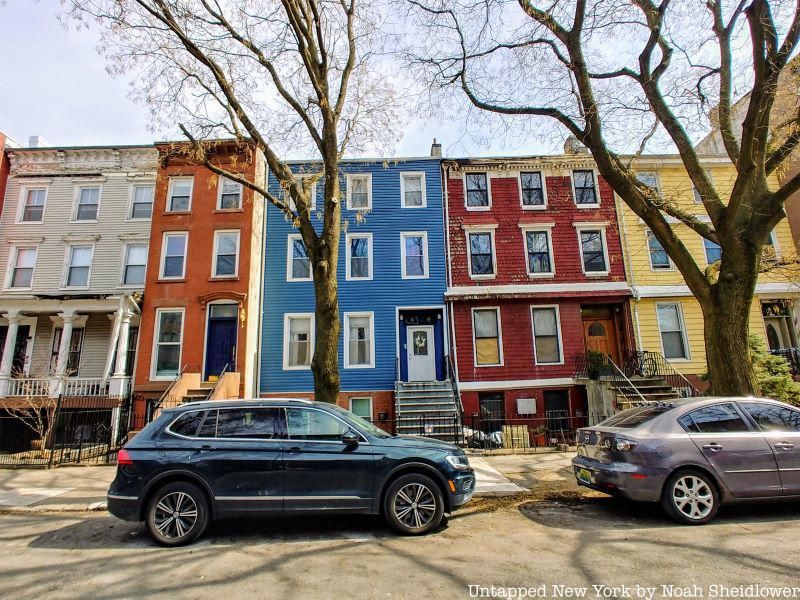
Fort Greene is a popular neighborhood in northwestern Brooklyn located near Clinton Hill and Boerum Hill. Known for its historic architecture, expansive green space, and delicious restaurants, Fort Greene has developed into one of Brooklyn’s trendier neighborhoods. Many know the neighborhood for its namesake park, while others know it for Brooklyn Technical High School, one of the best and most elite high schools in New York City. Fort Greene has plenty of secrets to explore, such as the fascinating history of its Prison Ship Martyrs’ Monument, its celebrity presence, and a strange and rarely mentioned chocolate flood that was disastrous for the neighborhood. Here are our 12 secrets of Fort Greene!
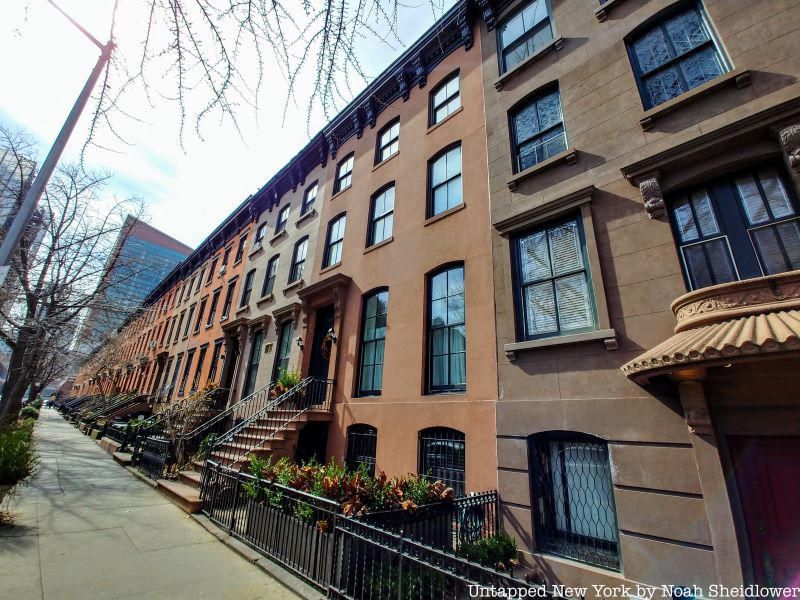
Fort Greene was a Revolutionary War-era fort built in 1776 under the supervision of Nathanael Greene, a Continental Army General from Rhode Island. The fort was first called Fort Putnam after Rufus Putnam, Washington’s Chief of Engineers, and was the largest on Long Island, with star-shaped earthwork and six cannons. Greene aided George Washington during the Battle of Long Island, which was ultimately a defeat for American forces. Though, after the battle, Washington withdrew his troops from the fort in darkness, which saved the Americans from total defeat. The fort deteriorated in the following years, though it was repaired in advance of an attack during the War of 1812.
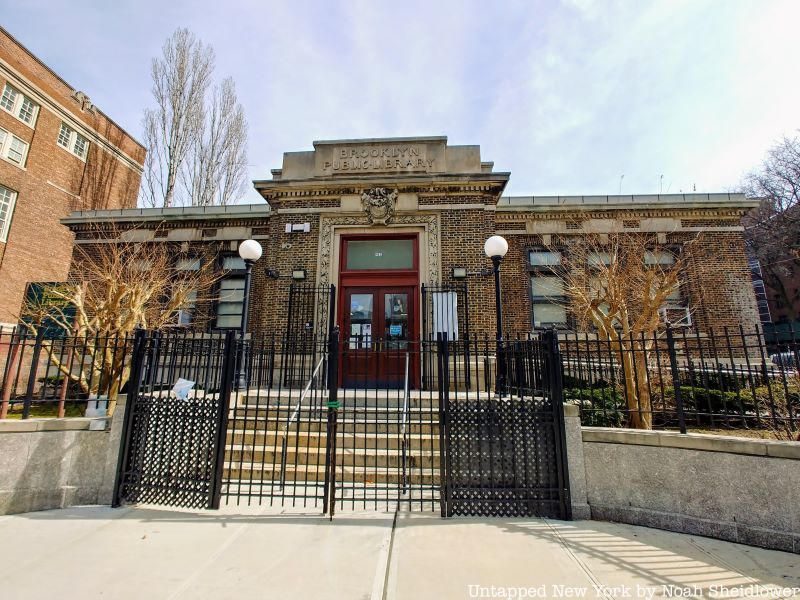
The fort was located near present-day Fort Greene Park, which was a lesser-known collaboration between Frederick Law Olmsted and Calvert Vaux. One of the main proponents for the construction of the park was none other than poet Walt Whitman. The park is the oldest in Brooklyn designated by the city.
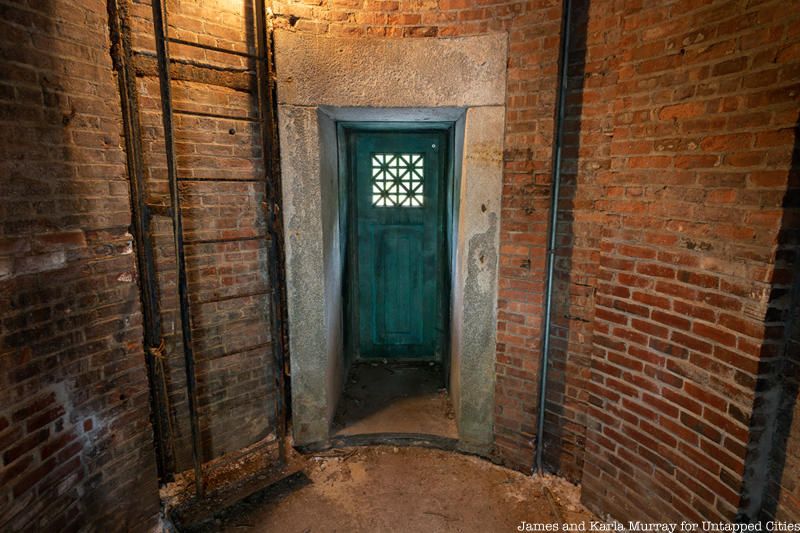
The Prison Ship Martyrs’ Monument in Fort Greene Park is one of the defining features of the neighborhood, commemorating the more than 11,500 American prisoners of war who died in captivity while on British prison ships during the Revolutionary War. Prisoners were kept aboard the HMS Jersey, Falmouth, Hope, and other ships, some of which were maintained in New York Harbor. More Americans died in British jails and prison ships in the Harbor than in all Revolutionary War battles. Unfortunately, many bodies were thrown overboard, and many were left neglected in Wallabout Bay. During the construction of the Brooklyn Navy Yard, many of these remains were uncovered and put into boxes and casks, and a small number of remains were interred in a crypt beneath the base of the monument.
An original vault was constructed starting in 1808, though little was done to repair or maintain it. In 1873, $6,500 was put forward for a new brick mausoleum, which was later replaced by a larger monument. Olmsted and Vaux were originally tasked with designing the monument, but the final design was put forward by Stanford White. The monument stands at 149 feet high and consists of a granite Doric column. A bronze brazier by Adolph Weinman sits atop the column.
William Howard Taft delivered an address when the monument was dedicated in 1908. Just six years later, though, one of the four bronze eagles was stolen and sold as scrap metal, and in 1923, vandals battered the bronze door to the crypt. In 2004, a $3.5 million budget was put forward for the renovation of the monument and crypt. King Juan Carlos II of Spain paid an official visit to Fort Greene Park during the Bicentennial Year of 1976.
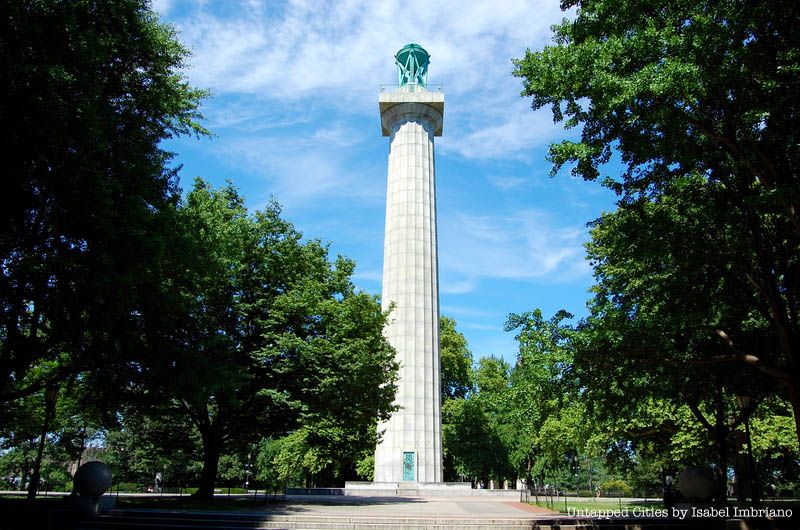
In 2015, a bust of Edward Snowden was illegally installed in Fort Greene Park. It was attached to a Doric column by the Prison Ship Martyrs’ Monument by three anonymous artists. The team who installed the bust of the American whistleblower adorned white construction helmets and reflexive vests, similar to workers of the Parks Department. The bust was made from Hydrocal, and it resembled other sculptures in the park with Snowden’s name at the base. The artists in a statement said, “Our goal is to bring a renewed vitality to the space and prompt even more visitors to ponder the sacrifices made for their freedoms.”
The sculpture was up for about 12 hours before being taken down. But soon after, a group of artists called the Illuminator Art Collective created a hologram image of Snowden in place of the sculpture. The city eventually returned the sculpture to the artists, which was later exhibited at the Brooklyn Museum.
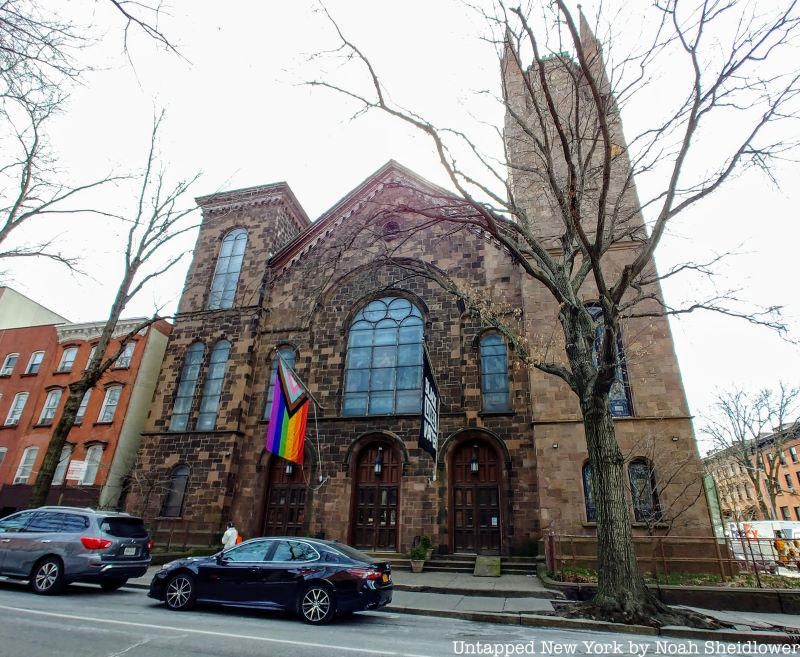
The story of Fort Greene’s development was shaped by the contributions of many Black residents and cultural institutions. New York State ended slavery in 1827 (although it would take until 1841 for the complete outlawing statewide), and 20 years later, the first school for African Americans opened, simply called “Coloured School No. 1.” The school was located on the grounds of the present0day Walt Whitman Houses.
Lafayette Avenue Presbyterian Church, founded in 1857 by abolitionists, brought in speakers such as Frederick Douglass and Harriet Tubman to rally efforts to end slavery. The church was also a major player in helping people escape via the Underground Railroad. A few years later, during the 1863 Draft Riots, Black workers defended their rights at the nearby Brooklyn Navy Yard. By 1870, approximately half of Brooklyn’s Black population lived in Fort Greene. Among the neighborhood’s residents was Susan McKinney Steward, the first African American woman to earn a medical degree in New York State.
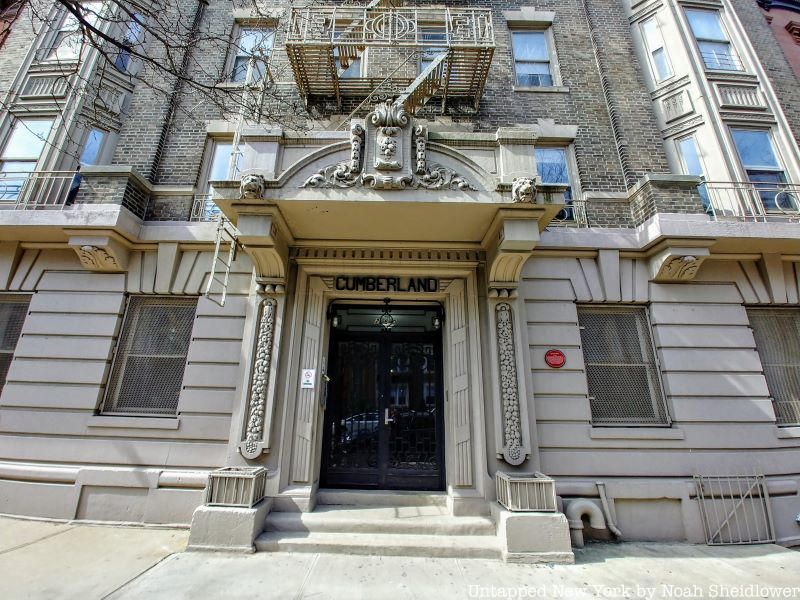
Fort Greene has had its fair share of famous literary residents, including Walt Whitman. Notable for his collection Leaves of Grass, Whitman played a major role in the development of Brooklyn’s literary scene, authoring poems such as “Crossing Brooklyn Ferry” and editing the Brooklyn Eagle. The poet Marianne Moore lived in an apartment house on Cumberland Street, which has been preserved at the Rosenbach Museum & Library in Philadelphia. While living on Carlton Avenue, Richard Wright wrote his magnum opus Native Son. Though perhaps more famous for living in Brooklyn Heights, Truman Capote had a home in Fort Greene, as did John Steinbeck. A number of Harlem Renaissance authors also lived in Fort Greene, including Gwendolyn B. Bennett.
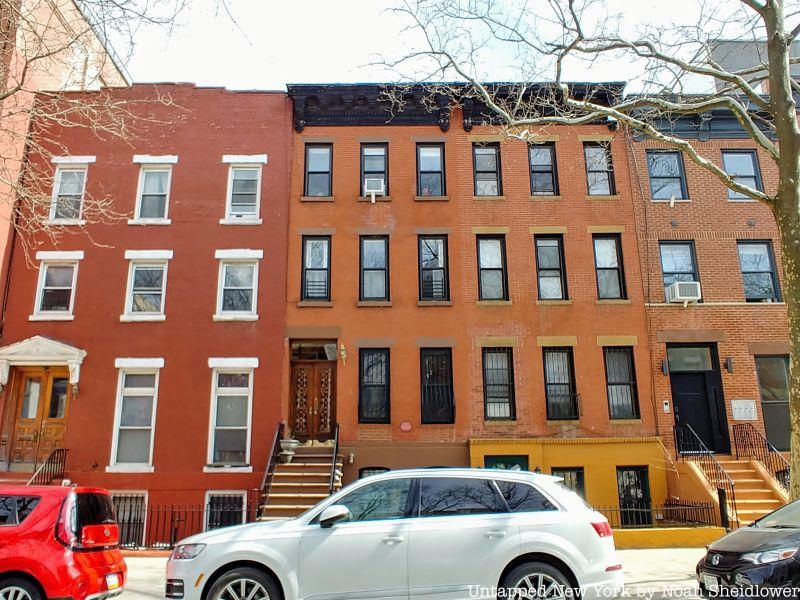
More contemporary authors have included Jhumpa Lahiri, who authored The Interpreter of Maladies; David Henry Hwang, the playwright behind M. Butterfly and Yellow Face; Colson Whitehead, author of The Underground Railroad and The Intuitionist; and Jennifer Egan, who wrote the novel A Visit From the Goon Squad.
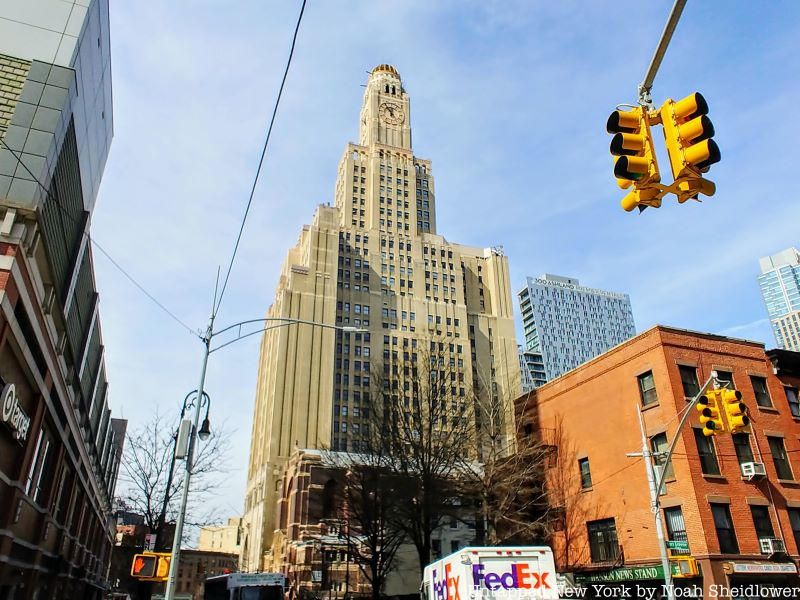
The Williamsburgh Savings Bank Tower, which is actually located in Fort Greene, is a skyscraper at 1 Hanson Place, which was the tallest building in Brooklyn until 2010. The 37-floor tower, built from 1927 to 1929, was designed by Halsey, McCormack and Helmer. The tower is located near Times Plaza at the intersection of Flatbush Avenue, Fourth Avenue, and Atlantic Avenue. It was constructed in the Byzantine-Romanesque style with a gilded copper dome and carved animals on the exterior. The ground floor features a marble hall with rich mosaics on ceiling vaults. Helmer wanted the building to be “regarded as a cathedral dedicated to the furtherance of thrift and prosperity.”
The tower is also one of the tallest four-sided clock towers in the world. The building contains clock faces 17 feet in diameter, which are located just under the dome. It is one of just a handful of clock towers in New York City, alongside the Metropolitan Life Insurance Company Tower and Jefferson Market Library.
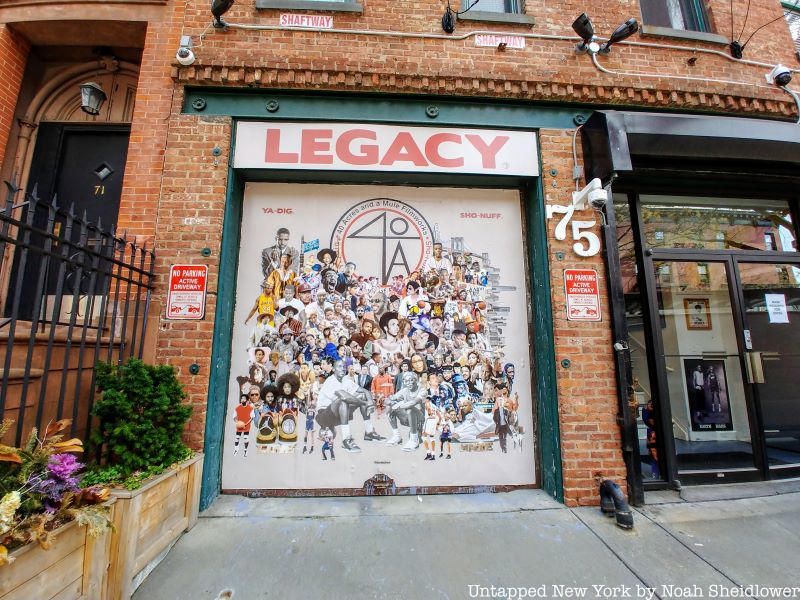
In the mid-1980s, Spike Lee established his production company 40 Acres and a Mule Filmworks. Spike Lee’s father Bill Lee lived in the neighborhood and rented rooms to musicians like Wes Montgomery and Wayne Shorter. The company name stems from a wartime order during the Civil War to allot land to some freed families; the land was later returned to previous owners after the order was revoked by Andrew Johnson. The company produced all of Lee’s films, beginning with She’s Gotta Have It.
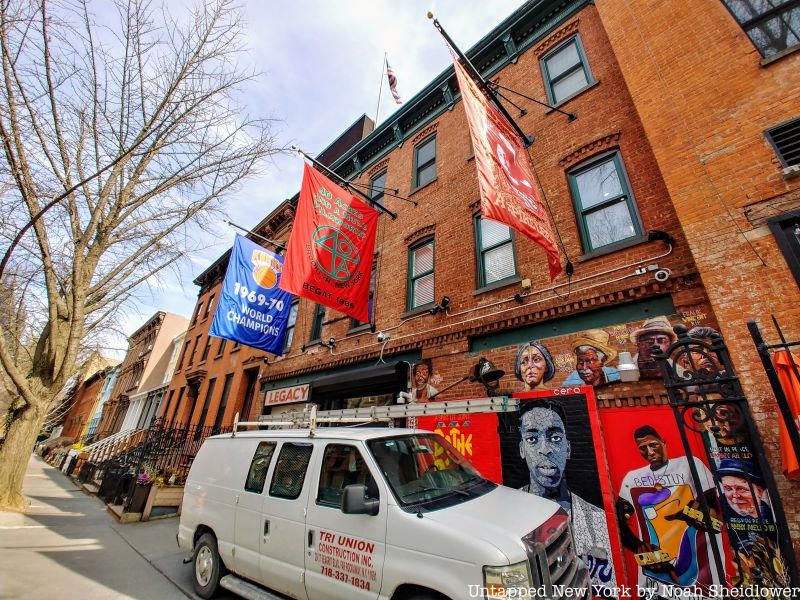
Lee expanded the company to include clothing stores following the success of Do the Right Thing. The company is located at South Elliott Place and has produced over 30 films. In addition to producing films, the company established a music branch called 40 Acres and a Mule Musicworks. The company signed a partnership with Netflix in December 2021 to develop film and television projects.
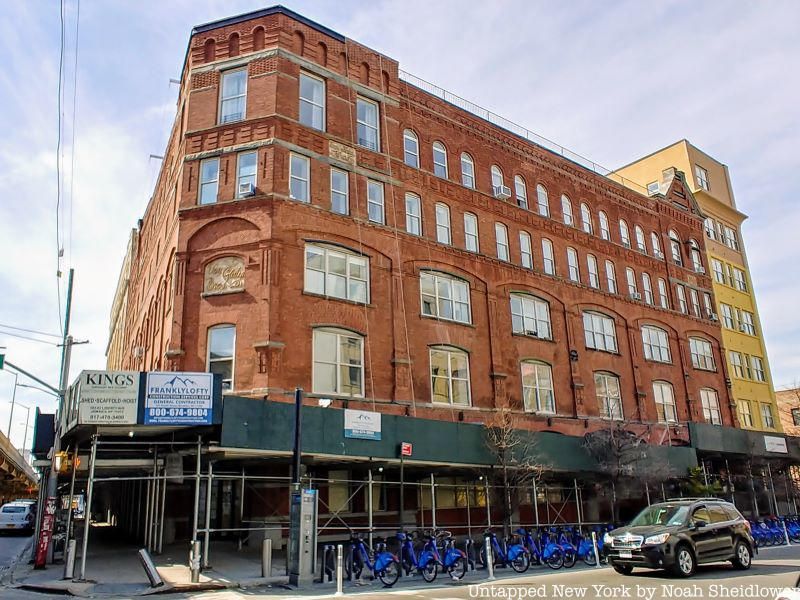
The Rockwood Chocolate Factory Historic District is a national historic district in Fort Greene consisting of 16 buildings built between 1891 and 1928. Many of the buildings have been converted to loft apartments, including the remains of the former Rockwood & Company Chocolate Factory. Founded in 1886, the company moved from Manhattan to the Brooklyn facility in 1904. Though just 15 years later, the factory building caught on fire, and the subsequent damage led to the “Brooklyn Chocolate Flood.” Hot butter and cocoa melted and ran into the street, falling down storm drains.
Rockwood was actually one of the largest chocolatiers in the country, operating at the plant until 1967. Afterward, the buildings sat vacant until they were sold in 1996 and were converted into the Chocolate Apartments. The historic district also contains other buildings, some in the Romanesque Revival style. The district has been incorporated into the larger Wallabout Industrial Historic District.
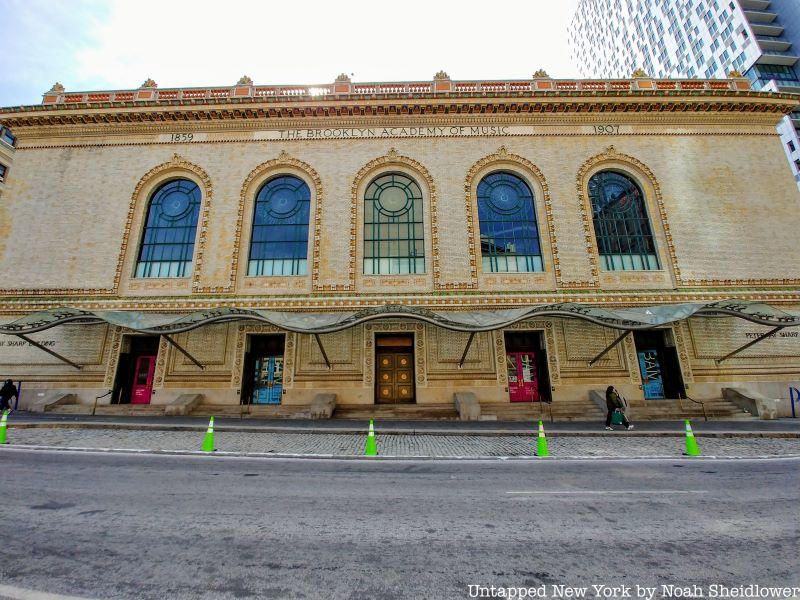
The Brooklyn Academy of Music predates many quintessential New York City concert venues, including Carnegie Hall. Opened in 1861, Brooklyn Academy of Music has long been a center for progressive and avant-garde performance, beginning operations at its present location in 1908. The idea for the Academy was put forward in 1858 during a meeting at the Polytechnic Institute, now NYU’s Tandon School of Engineering. The original building housed a 2,100-seat theater, designed by Leopold Eidlitz, perhaps better known for his work on the New York State Capitol.
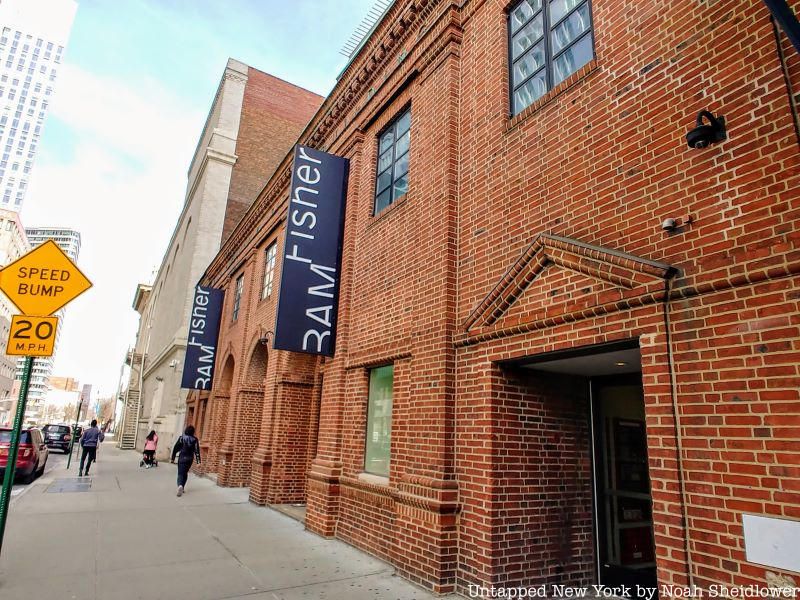
At the 1861 opening concert, an orchestra performed the overture to Carl Maria von Weber’s opera Der Freischütz, followed by other arias and opera excerpts including William Tell. In the next few years, figures such as Fritz Kreisler and Edwin Booth (brother of John Wilkes Booth and founder of the Players Club on Gramercy Park) performed there. However, a fire burned the building to the ground in 1903, but the cornerstone for a new building was placed in 1906. Opening concerts in 1908 featured the famed Geraldine Farrar and Enrico Caruso in a Metropolitan Opera production of Charles Gounod’s Faust.
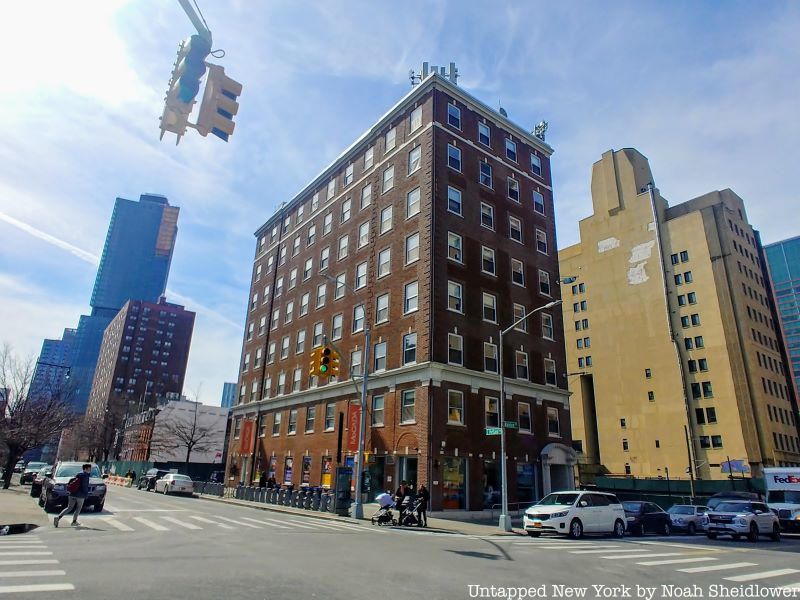
The Museum of Contemporary African Diasporan Arts (MoCADA) displays exhibitions and hosts community programming and educational initiatives centered on social justice. The museum fosters dialogue on social and political issues facing the African Diaspora, allowing for the continuous evolution of culture. The museum was founded in 1999 by Laurie Angela Cumbo in a brownstone in Bedford-Stuyvesant, inspired by her graduate thesis at New York University, which discussed the feasibility of an African diaspora museum contributing to the revitalization of central Brooklyn.
The museum has featured the works of Nigerian artist Dennis Osadebe, including an interactive game called “Playful Rebellion” that explores the foundational themes of history, innovation, heritage; a pop-up mural by multidisciplinary artist Helina Metaferia exploring the power and resiliency of Black women; and a retrospective featuring Nigerian artist Ndidi Emefiele.
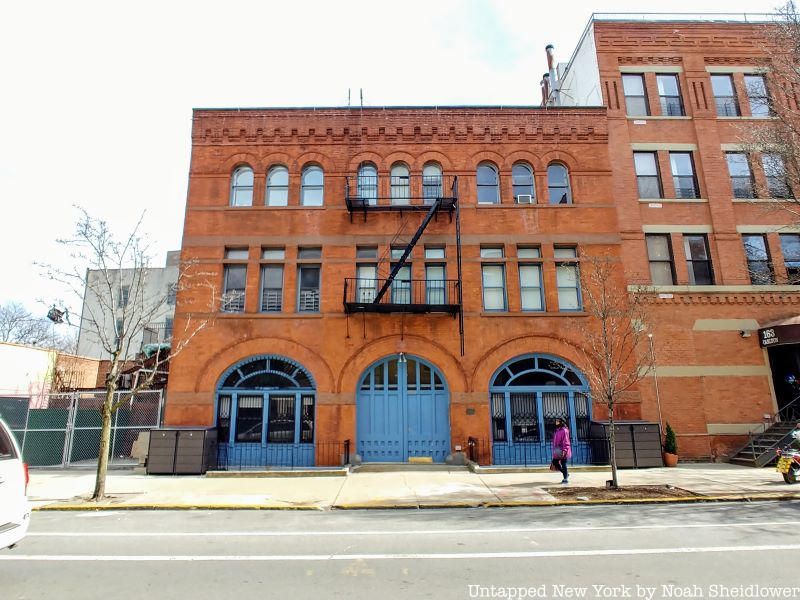
The Feuchtwanger Stable, one of the area’s only sites on the National Register of Historic Places, is a historic building located on Carlton Avenue. The Romanesque Revival was built in 1888 as a public stable near Fulton Street, designed by famed Brooklyn architect Marshall J. Morrill — who also designed the Lafayette Avenue Presbyterian Church. The large triple arches on the ground floor, which have been preserved, were entrances for horses and carriages. with ramps leading to the upper level for horses to stay. The triple arch motif was also kept for the top floor windows.
A significant number of these stables were torn down; only a few remain throughout Brooklyn, including a handful on Washington and Clinton Avenues. With the advent of automobiles, these stables were rendered obsolete, and many were converted into factories. The Feuchtwanger Stable was converted into a candle factory, then a storage warehouse, then an auto repair shop. The building was abandoned for a few years after a 1980s fire, but it was soon after developed into loft condominiums in 1988.

Many of Fort Greene’s streets took their names from terraces and streets in Westminster, London. These include Adelphi, Carlton, Cumberland, Oxford, and Portland. Around the mid-19th century, what would become Fort Greene was an upper-class neighborhood for wealthy professionals, and to accommodate the growing population, many Italianate brick and brownstone row houses were constructed. Despite its name, the Italianate style was developed in the early 1800s by architect John Nash in Britain.
Today, many of these original Italianate homes are still standing, as well as historic homes in the Greek Revival, Second Empire, Romanesque Revival, and Neo-Grec styles. The Eastlake movement during the Victorian period also inspired many homes in Fort Greene, defined by geometric ornaments and low relief carvings.
Next, check out the Top 12 Secrets of Cobble Hill!
Subscribe to our newsletter